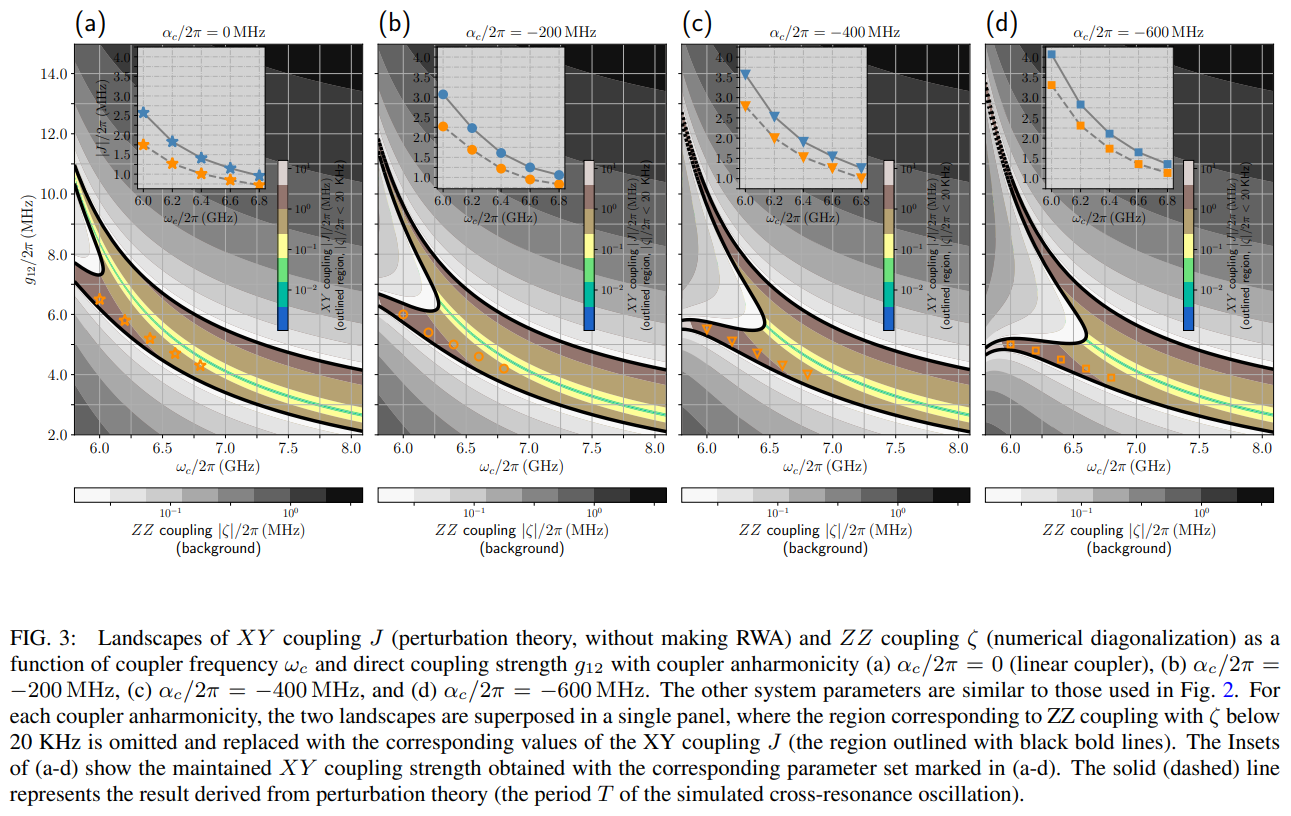Suppression of static ZZ interaction in an all-transmon quantum processor
2024-09-12 12:54
2902 浏览Source: https://arxiv.org/pdf/2011.03976
Abstract: The superconducting transmon qubit is currently a leading qubit modality for quantum computing, but gate performance in quantum processor with transmons is often insufficient to support running complex algorithms for practical applications. It is thus highly desirable to further improve gate performance. Due to the weak anharmonicity of transmon, a static ZZ interaction between coupled transmons commonly exists, undermining the gate performance, and in long term, it can become performance limiting. Here we theoretically explore a promising parameter region in an all-transmon system to address this issue. We show that an feasible parameter region, where the ZZ interaction is heavily suppressed while leaving XY interaction with an adequate strength to implement two-qubit gates, can be found for all-transmon systems. Thus, two-qubit gates, such as crossresonance gate or iSWAP gate, can be realized without the detrimental effect from static ZZ interaction. To illustrate this, we demonstrate that an iSWAP gate with fast gate speed and dramatically lower conditional phase error can be achieved. Scaling up to large-scale transmon quantum processor, especially the cases with fixed coupling, addressing error, idling error, and crosstalk that arises from static ZZ interaction could also be strongly suppressed.

Conclusion: In summary, we have demonstrated that a feasible parameter region, where static ZZ coupling is heavily suppressed while leaving XY interaction with an adequate strength to implement two-qubit gates, such as cross-resonance gate or iSWAP gate, can be found in an all-transmon system. We further show that an iSWAP gate with fast gate speed and dramatically low conditional phase error can indeed be achieved in this parameter region. Without the detrimental effect from the static ZZ coupling, for transmon quantum processor with fixed coupling, single-qubit addressing error, idling error, and crosstalk that arise from static ZZ coupling should also be heavily suppressed. From the point view of perturbation theory, the main physics behind these benefits is that in the proposed system, XY and ZZ coupling are enabled by different virtual transitions and different intermediate states, thus providing the possibility to engineer quantum interference for mitigating ZZ coupling while retaining XY coupling. One thus reasonably estimate that it is also possible to achieve the mitigation of static ZZ coupling for XY -based two-qubit gates with other types of coupler circuits (see Appendix E for details). (Please see the original article for more conclusions)
